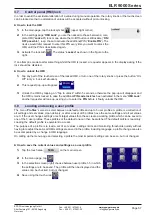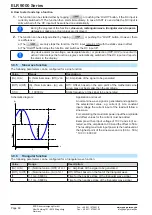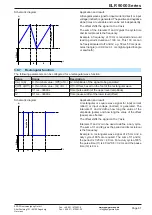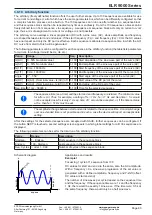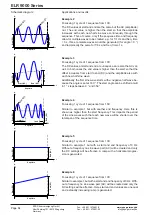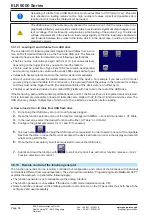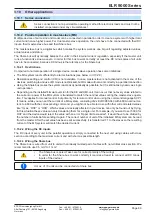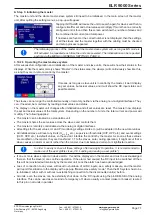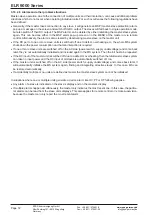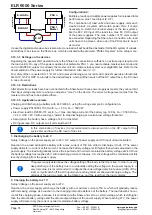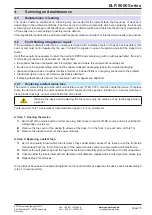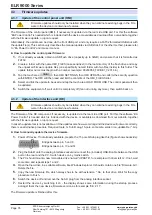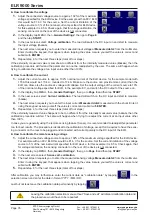
Page 71
EPS Stromversorgung GmbH
Alter Postweg 101 • 86159 Augsburg
Germany
Fon: +49 821 / 570451-0
Fax: +49 821 / 570451-25
ELR 9000 Series
►
Step 3: Initialising the master
The master unit and the whole master-slave system still need to be initialised. In the main screen of the master
unit, after quitting the setting menus, a pop-up will appear:
Tapping INITIALIZE will cause the unit to search again for slaves and then to
configure itself for set and actual values accordingly. If more than one correctly
configured unit is found then this screen will show the number of slaves and
the combined total current and total power.
If no slaves are found, or the correct number is not displayed, then the settings
of all the slaves and the master together with the cabling must be checked
and setup process repeated.
The initialising process of the master and the master-slave system will, as long as MS mode is
still activated, be repeated each time the units are powered. The initialisation can be repeated
anytime via the MENU in GENERAL SETTINGS, PAGE: 9.
3.10.2.5 Operating the master-slave system
After successful configuration and initialisation of the master and slave units, these will show their status in the
displays. While the master merely shows “Master” in the status area, the slave(s) will continuously show like this,
as long they are in remote control by the master:
It means, as long as a slave unit is in control by the master, it won’t display
any set values, but actual values, and it will show the DC input status and
possible alarms.
The slaves can no longer be controlled manually or remotely, neither via the analog nor via digital interfaces. They
can, if needed, be monitored by reading actual values and status.
The display on the master unit changes after initialisation and all set values are reset. The master now displays
the set and actual values of the total system. Depending on the number of units, the total current and power will
multiply. The following applies:
•
The master can be treated as a standalone unit
•
The master shares the set values across the slaves and controls them
•
The master is remotely controllable via the analog or digital interfaces
•
All settings for the set values U,I and P (monitoring, settings limits etc.) will be adapted to the new total values
•
All initialised slave will reset any limits (U
Min
, I
Max
etc.), supervision thresholds (OVP, OPP etc.) and event settings
(UCD, OVD etc.) to default values, so these don’t interfere the control by the master. As soon as these values
are modified on the master, they are transferred 1:1 to the slaves. Later, during operation, it might occur that a
slave causes an alarm or event rather than the master, due to imbalanced current or slightfaster reaction
In order to easily restore all these settings after leaving MS operation, it is recommended to
make use of the user profiles (see „3.8. Loading and saving a user profile“
•
If one or more slaves report an device alarm, this will be displayed on the master and must be acknowledged
there so that the slave(s) can continue operation. If the alarm had caused the DC input to be switched off then
this will be reinstated automatically by the master unit once the alarm has been acknowledged
•
Loss of connection to any slave will result in shutdown of all DC inputs, as a safety measure, and the master
will report this situation in the display with a pop-up “Master-slave safety mode”. Then the MS system has to be
re-initialised, either with or without re-establishing connection to the disconnected unit(s) before.
•
All units, even the slaves, can be externally shut down on the DC inputs using the pin REM-SB of the analog
interface. This can be used as some kind of emergency off, where usually a contact (maker or breaker) is wired
to this pin on all units in parallel.

